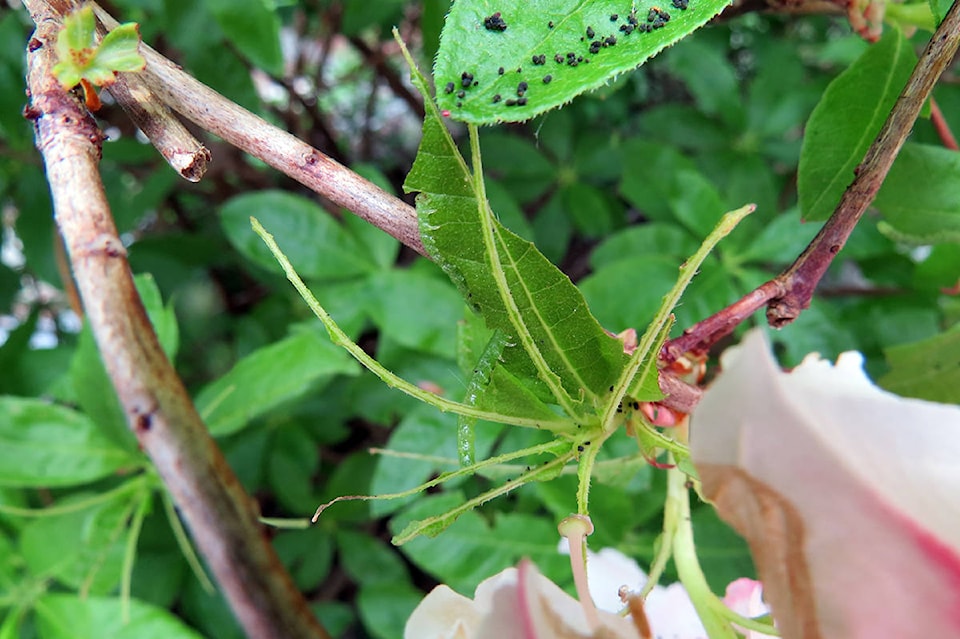Leslie Cox
Special to The Record
Darn. Remember those azalea sawflies I was talking about two months ago? Well, the adults have been and gone. How do I know? I am seeing ravenous, newly hatched larvae. With the help of my digital microscope, I have found first and second instar larvae, as well as unhatched eggs.
Double darn. I really should have hung the yellow sticky traps in the azaleas. Had honestly planned to but hey, all gardeners know how long the spring chore list can stretch. Now I am paying the price for my tardiness because the female sawflies likely started laying their eggs around the last week of April. Best guess.
I do know through researching this pest that adult sawflies are only out in sunny weather and they have a short lifespan of one to two weeks. Same as most butterfly species. The scary part is sawflies are quite possibly parthenogenetic, meaning females do not need to mate with males in order to produce eggs. So says P.J. Leisch and Susan Mahr of the University of Wisconsin, at least.
But right now the sex life of the adults is not what concerns me. It is the result, or lack thereof, of such amorous activity in the garden that has me unglued.
How well I remember the infestation we had on these azaleas last year. Damage was incredible…although thankfully, the larvae never do enough damage to kill the plant. Only make it look unsightly covered in decimated leaves with just the midrib remaining. Looking back in my journal, I was hand-picking the larvae through the last week of May and into June. At least I learned one lesson last year: to start looking for damaged leaves earlier.
So guess what I am doing for the next several days…perhaps into weeks? You got it. Hunting and squishing tiny green larvae. No help for it. I am certainly not going to spray the recommended pyrethrum on my azaleas! We both love sticking our noses in the wonderfully scented ‘Irene Koster’ so chemical treatment is an assured no-no, even if we were even remotely inclined, which we are not.
Organic remedy calls for a jet blast from the hose. Not happening either with both azaleas in full bloom so I am reduced to squishing. John does help a little but being far-sighted, he is virtually blind in spotting the tiny green larvae which blend in well with the azalea leaves. Part of the larvae’s line of defence against predators.
And thankfully, there are predators who hunt these pests. I was working side-by-side a European paper wasp the other day. Literally. I didn’t bother it and it ignored me, intent as we both were on our hunting activities - me to annihilate, the wasp to find lunch. I also noticed a fly licking a leaf, cleaning up some larvae excrement. Yucky, I know, but hey, I’ll take help with house-cleaning wherever I can get it. Especially when it does not cost me anything.
Enough about pests. Don’t you always feel a sense of wonderment when you learn something new about your garden? We do. Both John and I were amazed to discover our Kerria japonica ‘Pleniflora’ (double-flowered Japanese rose) is actually scented. And delightfully, I might add.
It is embarrassing to admit this fact since this shrub has been in our garden for nearly 20 years. In our defence, there are scented plants nearby to which we attributed the cause. However, on this particular night, it was a true revelation to walk past the kerria and realize it was the scent producer. And there is the kicker. This kerria is only scented at night.
The things you learn as you work, and walk, in a garden. Incredible.
Leslie Cox co-owns Growing Concern Cottage Garden in Black Creek. Her website is at www.duchessofdirt.ca and her column appears every second Thursday in The Record.
